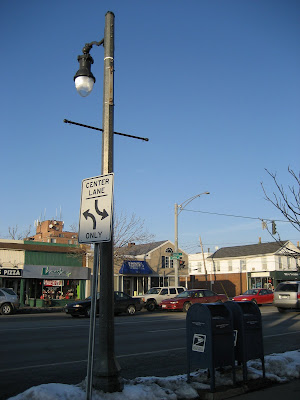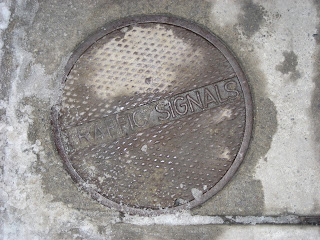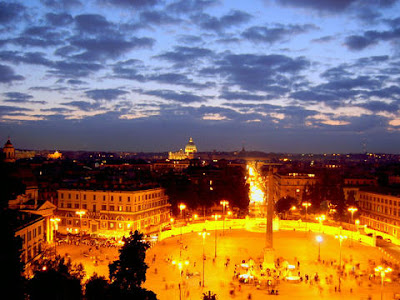I took a stroll down Main Street in the Village of Williamsville on Monday afternoon. It was cold but sunny, with cleared sidewalks and scattered pedestrians. Slushy piles of grayish snow were covering the ground and parts of the crosswalks, but ambling dogs and zigzagging joggers were the only obstacles that I encountered. The street furniture that I viewed in a few blocks was impressive- not only in number and variety, but also in chronological age. Indeed, the evolution of the street itself could be seen over time. As I walked I noticed utility poles made of two different materials: metal and wood.

A metal pole is on the left, and a wooden pole is on the right.
Public lighting varied in types as well. I noticed four types:
1) an older style of street light (either vintage or made to look that way) atop a metal post that had holders for hanging flower baskets;
2) a newer style of street light that I have seen on the highways and byways all around the U.S.;
3) individual business-supplied lighting on the building facades; and
4) individual business-supplied lighting in front of the businesses.
Some examples of different types of street lights.

The older style lamp post is in the left foreground, while the newer type is in the right-hand side background.
Different styles of business-specific lighting located on the facade or freestanding.


Looking at the section over Glen Falls, I believe that the bridge sidewalk is a relatively recent addition. I surmised this due to the fact that the bridge only supports the road, not the sidewalk. Also of note is fact that the bridge sidewalk does not line up exactly with the street sidewalk.
The front of Creekview Restaurant (the yellow house) appears to jut out at the end of the bridge sidewalk.

Another new addition to the street (less than ten years old) is the plastic gas pipeline by the bridge.

Although I have always associated metal manhole covers with sewers, I found many along Main Street of differing sizes that were for gas and even traffic lights.



Street furniture serve various purposes.
- Relaxation (wooden, stone and metal benches)
- Educational (newspaper vending machines)
- Informational (street clocks)
- Decorative (flower pots, trees)
- Sanitation (garbage cans)
- Governmental (post office boxes)
- Locational (bus stops, building numbers, business signs)
- Directional (W or E on Main Street, street signs)
- Traffic-oriented (speed limits, turning lanes, no parking etc.)
- Patriotic (U.S. Flag)
- Vision (street lights)
- Utilities (poles, manholes)
- Pedestrians (traffic crosswalk signals)
- Historical Landmark Marker
Most of these types of street furniture have been around for at least a century.
These recent versions all appear to be less then half a century old.
Here are some examples of street furniture in clusters.

Picture 1. Street lamp post with rods to hang flower baskets off of; center lane sign; two P.O. Boxes.

Picture 2. Flower pots and garbage cans.

Picture 3. Clock, parking signs, wooden bench, Rt. 5 East sign, and street light.

Picture 4. Bus stop, speed limit sign, utility pole, and P.O. Box.

Picture 5. Street lamps, newspaper vending machine, and street number on building.

Picture 6. Fire hydrant, tree, traffic sign, bench, and business sign.

Picture 7. Utility poles, stone benches, no parking sign, street sign, crosswalk signal, street light, bus stop sign, business signs, and historic landmark sign.
A type of street furniture that I think is relatively new (within the last twenty years) is the brick edging on either side of the sidewalk (adjoining the shops and the street itself). I believe that this replaced the greenery to eliminate the expense of lawn upkeep for both the village and the individual businesses.

Following the old maxim of the more things change, the more they stay the same, I feel that the Main Street really hasn't changed that much in the last fifty years in terms of street furniture. The
types used have basically stayed the same, and have been updated over time due to technological advances (cable, internet, and telephone lines) and/or cost-benefit analysis (long-term but more expensive metal poles over short-term but cheaper wooden poles). That being said, I do not see Main Street changing that much over time for two main reasons. The first one is space. Although it is a major throughfare, unlike the recently expanded Sheridan Drive, there is no way that additional lanes can be added. Secondly, the Village of Williamsville views Main Street as a major factor in the way it defines itself, and is determined to preserve its quaint small town charm for historical and monetary reasons. Indeed, several Village occasions- from festivals to fundraisers- are held along Main Street.
















































